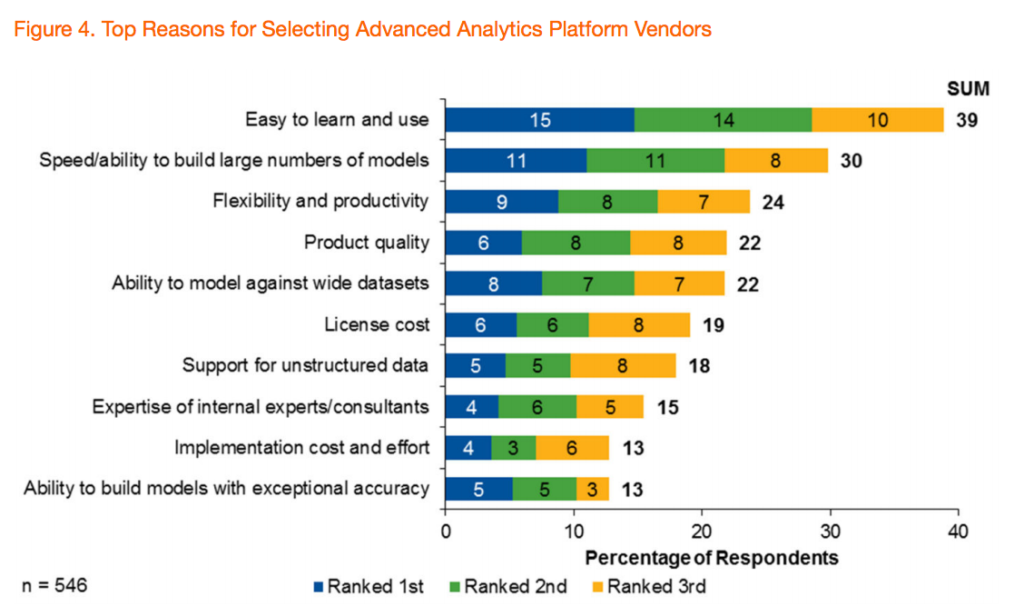
Analytics is trending like never before. And with good reason. Organizations spanning multiple markets – from finance to energy, as well as retail, ecommerce, and media and communications – recognize the ability to quickly apply actionable insights using real-time analytics as a game-changer. Simply put, anticipating and adapting to rapidly evolving market dynamics as they occur is now a competitive imperative.
How Advanced Analytics Drives Critical Success
According to a recent Gartner report titled How Data Science Teams Leverage Advanced Analytics,
“More than 50% of the surveyed users reported that senior executives see advanced analytics as critical to the organization’s success.”
The report goes on to add, “Growing pains aside, more organizations are investigating potential applications for advanced analytics than ever before. Gartner’s inquiries on the topic nearly doubled from January 2014 to January 2015, and are projected to grow 26% year over year in 2016.”1
Choosing the Right Advanced Analytics Vendor

One of the most telling findings from the Gartner report has to do with the selection criteria for analytics platforms. Gartner discovered that the top two reasons businesses stated for choosing specific advanced analytics platforms were ease of use and the ability to quickly build large numbers of models.
These two sought after characteristics illuminate underlying historical pain points that modern advanced analytics platforms have been able to overcome. In the past real-time analytics has been hindered by slow loading and querying times. In addition, concurrency – the ability to perform multiple data import, preparation and analytics tasks at the same time – has been conspicuously missing. Relying on disparate databases for transactions and data warehouses for analytics is no longer sufficient. In order for modern enterprises to truly operate in real time, the legacy approach of deploying a piecemeal collection of tools that require data shuffling or the painfully laborious ETL processes must be reimagined.
Embracing a highly durable and distributed in-memory database that provides sub-second transaction and analytical processing and reporting is the future for businesses adopting advanced analytics platforms. Businesses seek vendors providing platforms with both the ease of use created by a Hybrid Transaction/Analytical Processing (HTAP) database as well as the scalability and flexibility of a distributed system. In addition to using HTAP platforms to achieve advanced analytics, businesses must pursue operational excellence by embracing data warehouses capable of continuously loading data in real time. These platform attributes are what truly set vendors providing advanced analytics apart from one another.
Footnotes
- Gartner, How Data Science Teams Leverage Advanced Analytics, Peter Krensky | Lisa Kart, 29 August 2016
“Gartner does not endorse any vendor, product or service depicted in its research publications, and does not advise technology users to select only those vendors with the highest ratings or other designation. Gartner research publications consist of the opinions of Gartner’s research organization and should not be construed as statements of fact. Gartner disclaims all warranties, expressed or implied, with respect to this research, including any warranties of merchantability or fitness for a particular purpose.”




